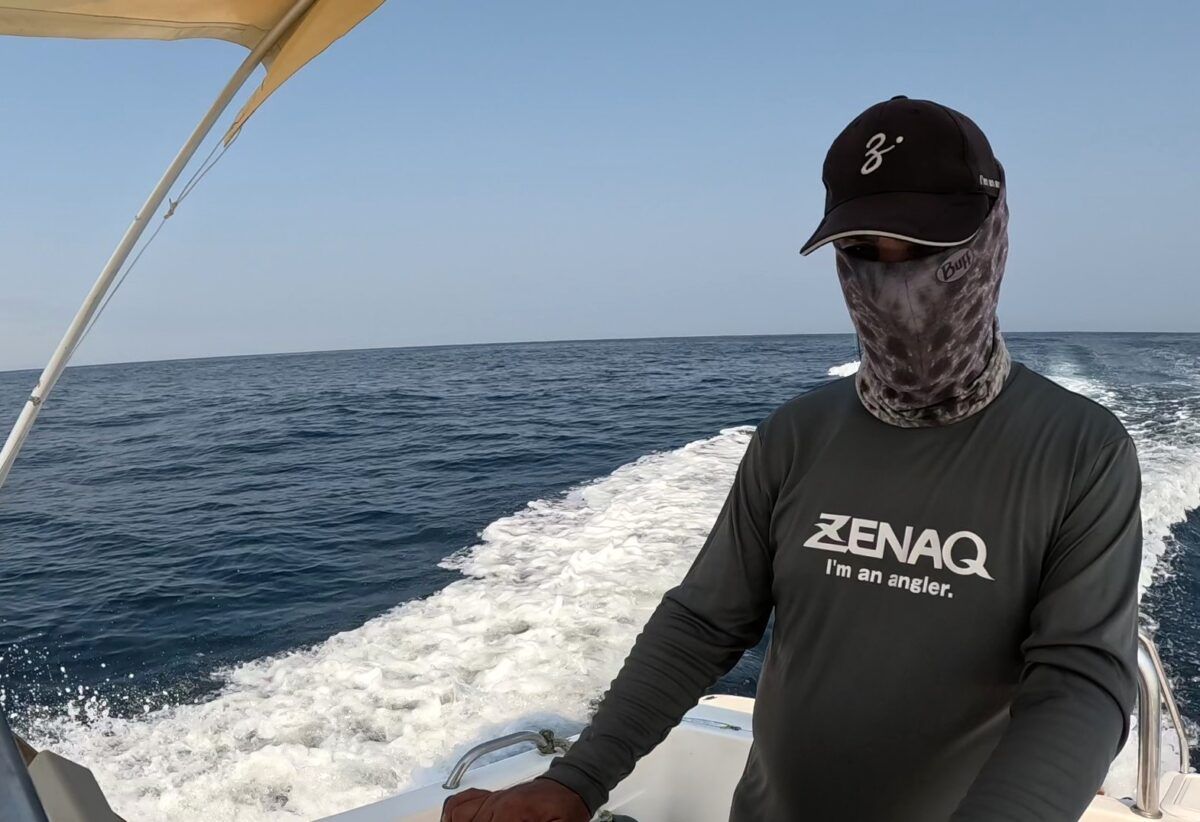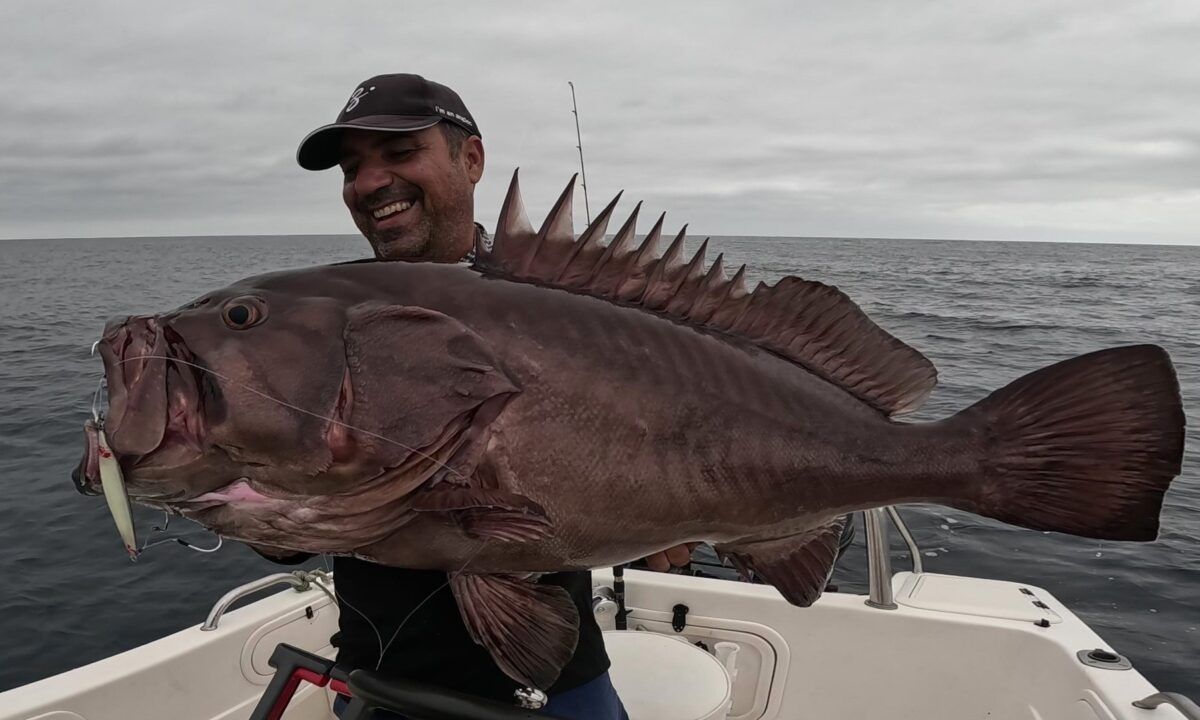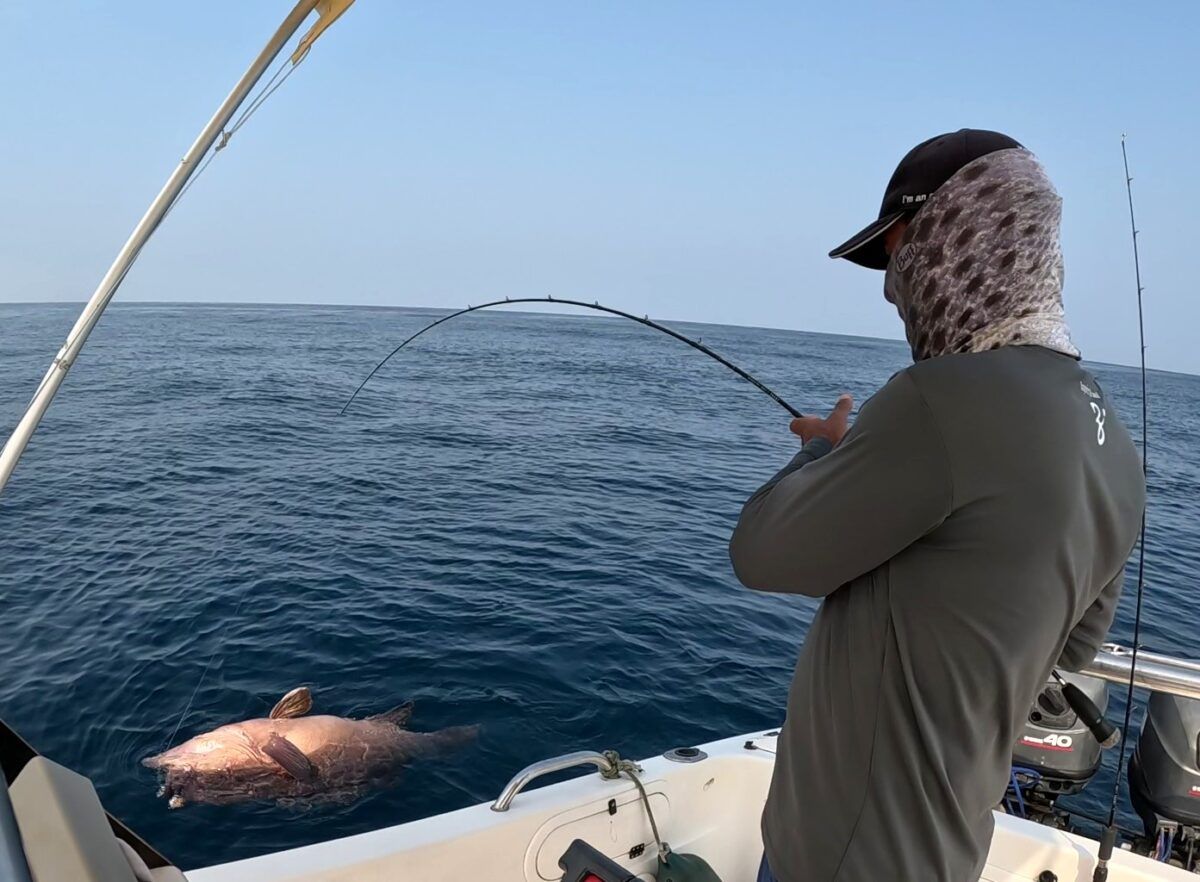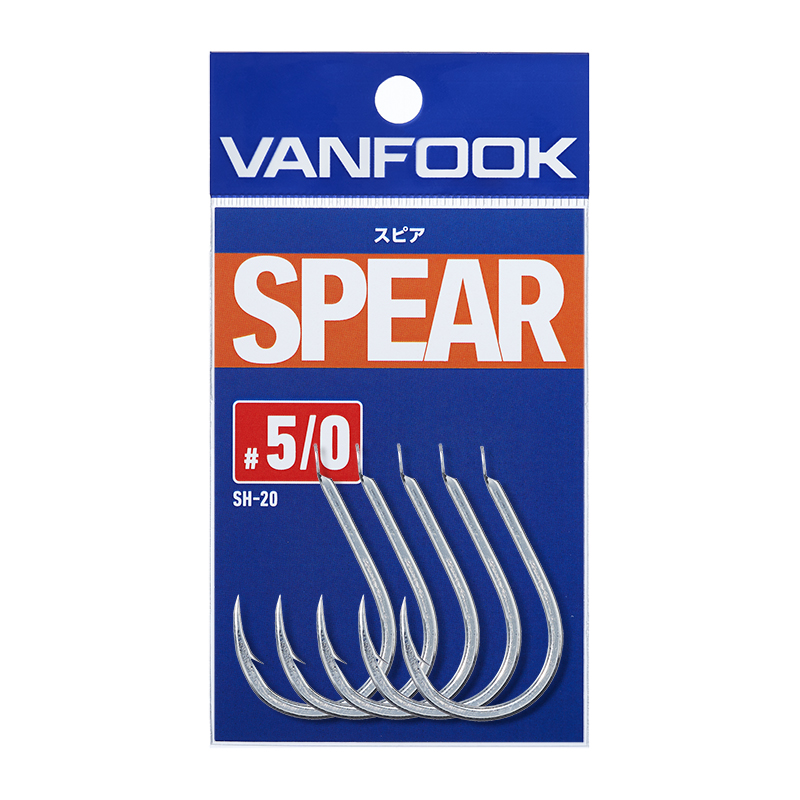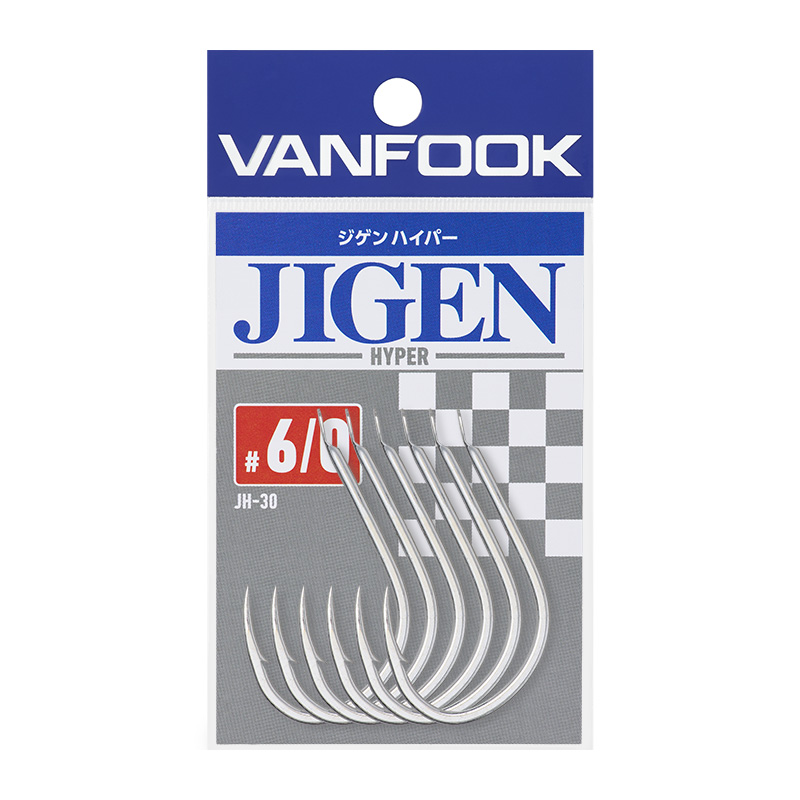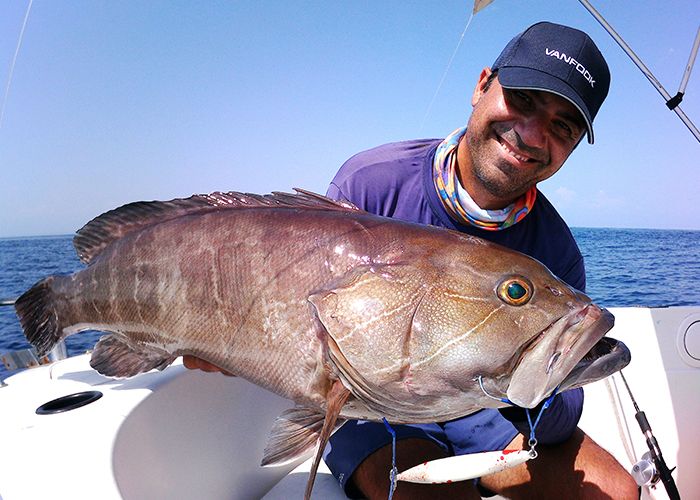How hard it is to encounter and hook the same fish twice in the Ocean?
Probably very hard right… But, what if I told you that it can be done, especially bottom species!
The Encounter with a Grouper
It all started the day before when I lost a fight with a big Grouper. I discovered a new terrain and the chances of having Groupers were extremely high. I was using the Ikari FB63-1, a soft action tone rod at that depth, with a PE #2.5 braid a 50Lb FC Leader and a 220g jig equipped with JIGEN HYPER Hooks size #5/0.
On that day, I already had caught in another place, 2 Dogtooth Groupers and had no problems. But in this new place I discovered later that right next to were the fish were marking, there were very low flat rocks. So I dropped the jig and after the second natural long fall movement of the jig, I felt a strong and powerful hit so normal to Groupers and predators that use suction has part of their feeding ability. The Grouper was even bigger than the other two and much stronger, so I pushed the limits of the main line but still she managed to pull 3 meters down, more than enough to get her mouth under the flat rock.
So I tried for 15 minutes to make the Grouper move, but my efforts were in vain. So as my last resort, I pulled my main line until my 50lb leader broke. The worst thing that can happen to me is to leave a jig on a fish mouth and leave her to her fate, of course that she will continue to feed until the hooks fall out of her mouth or rust with time. But still, I don’t like it.
On that jigging day I still managed to find and capture 5 Groupers, turning into a great jigging day despite the one I lost.
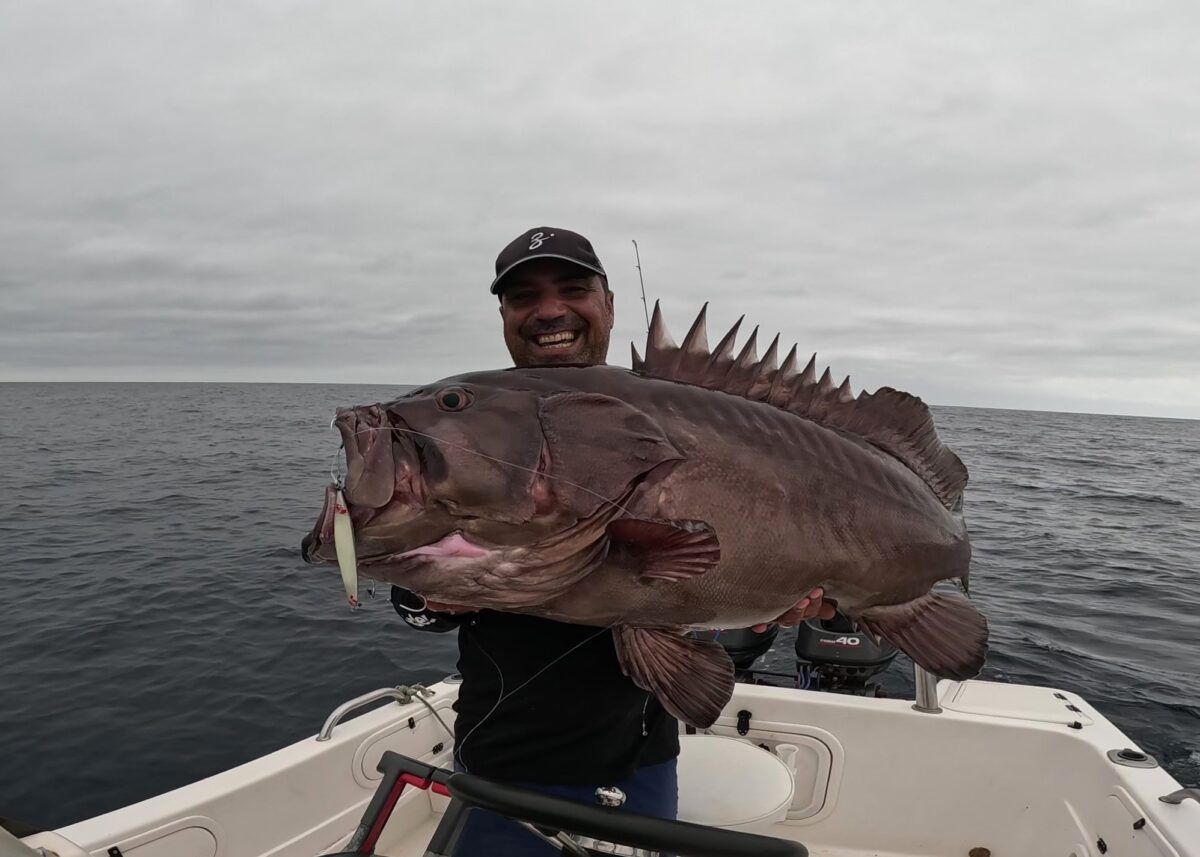
On the Second Day
I was determined to start the day by tracking down and find the lost Grouper that broke my leader. So I changed my main lines setup thinking on that terrain, to PE #3 a 60lb FC leader with a bigger size reel and with CB One Zero1 190g jig equipped with the Vanfook SPEAR hooks size #4/0.
Usually when a Grouper has a jig in mouth she will hide and doesn’t eat until they get use to the jig in their mouth. So there is no point in staying in the same place trying to make that fish to strike again, it’s better to stop and move on and give her time to adapt. Normally the day after they start feeding again like nothing happened, but that does not mean that they will stay in the same place you found them first, that will depend if the main reason she was there, continues to be there, in this case, the small fish she was feeding on.
But as normal, I started my search where I found her first and see if the bait fish were still there or not, and if they were I analyze their behavior. I could see that the bait fish was much less than the day before and they moved a little bit aside. So, I made two jig drops and found out that the bait fish was not the same specie than the day before. So, no point for her to stay there… no food for her…. so she would have to move on but were did she go?
For me, tracking fish underwater is similar to hunting tracking techniques. The difference is that, I use the sonar to see the small fish… how they react, the type of terrain, are they calm?, compact or scattered?, next to the bottom or above?, how many hours have passed since I lost her and is the current low, medium or strong? that can determine my search radius while I observe all the little details of an entire ecosystem interacting with each other.
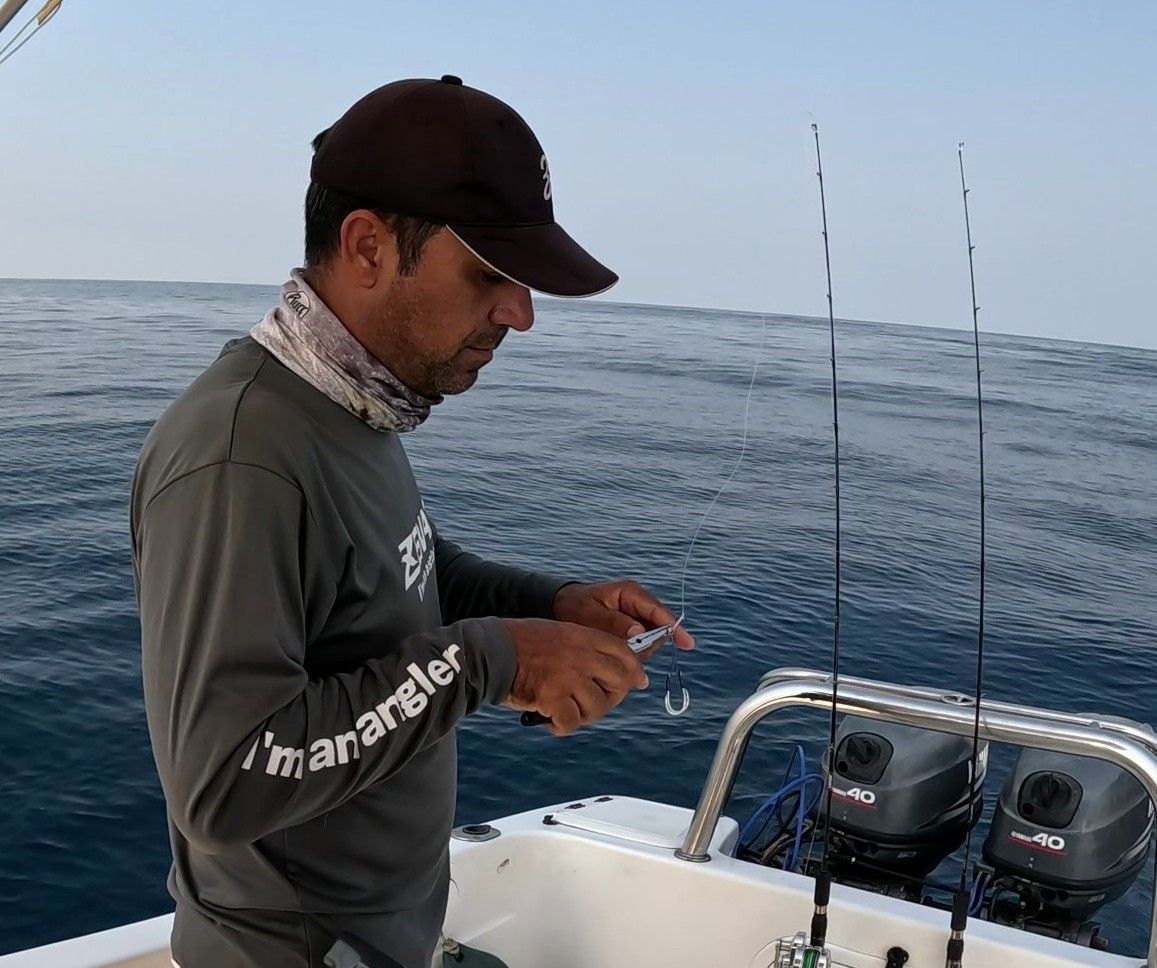
Seeking the Same Baitfish Ball
Big bottom predators are like lions in the savanna… it’s easier to find 200 or more zebras than one lion. And when you find the zebras, most certain the lion won’t be far away. Baitfish for example use the same principles has the zebras…, they control the lion movement by staying close to the lion, that way, if the lion moves, they can react in time to run.
So underwater, in the other hand, if the Baitfish can’t see the Grouper, they won’t know when she decides to move and strike. This is why I always track the bait fish first but still; this is not an easy task and it takes years to learn the skills through trial and error.
So, after I analyze the details I start tracking, it took me about one hour to find the same bait fish species about 850 meters away from the day before but in an opposite direction of the current.
My guess was that this was not the same bait fish ball the day before. I say this because normally, baitfish follow a line with the current and don’t change depths, and when they find food, they stop to feed. This new baitfish ball was a little deeper than the other one.
Despite this, this was the closest baitfish ball on that Grouper area. So, if she wanted to eat, she would have to be here. Of course, she could be staying somewhere else resting for a better opportunity to feed. But despite that, the way the baitfish were showing on the sonar were giving me good indications of something else below next to them.
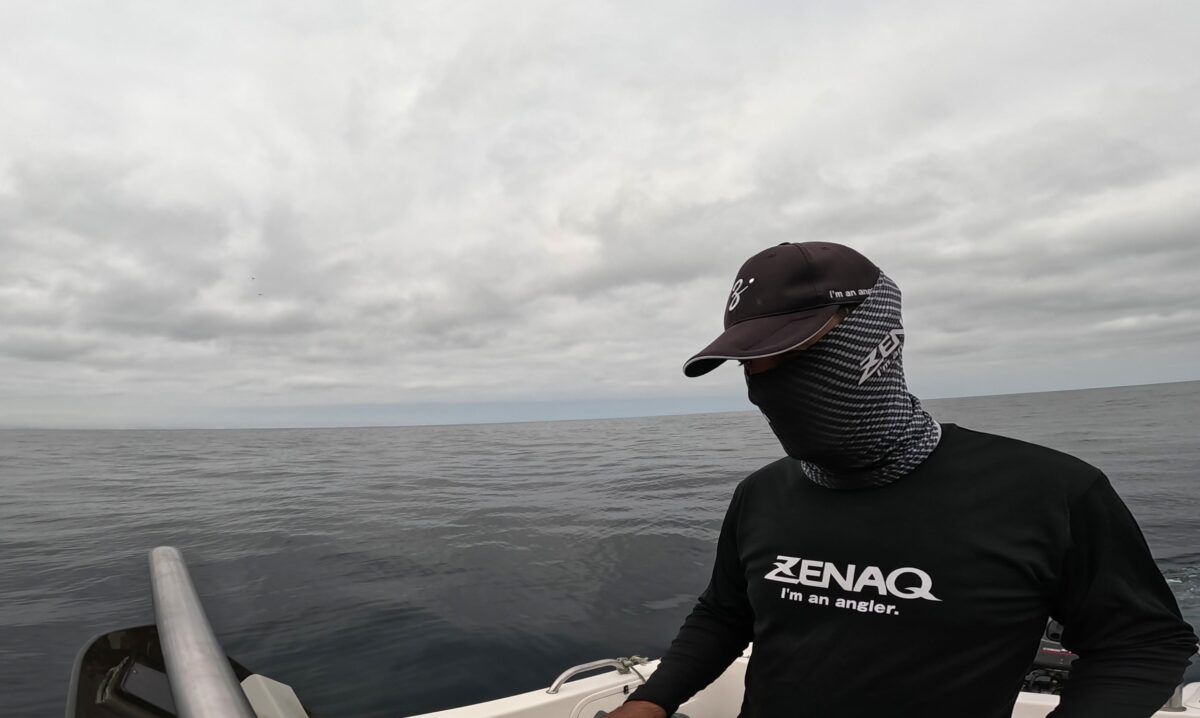
So, I dropped the jig and after a few seconds I hook a very small baitfish on the uplift of the jig and almost instantly, I feel a massive hit from a big Grouper and the fight starts. This was also a new terrain, but this time the choice of the setup gave me advantage over the fish and I managed to control the Grouper and break the fish will before she could use all her power next to the bottom. Despite the setup, it’s incredible how these big and old fish can test your gear and your ability to control your heart and mind during the fight. It’s so amazing and such an opportunity to catch these beautiful Groupers.
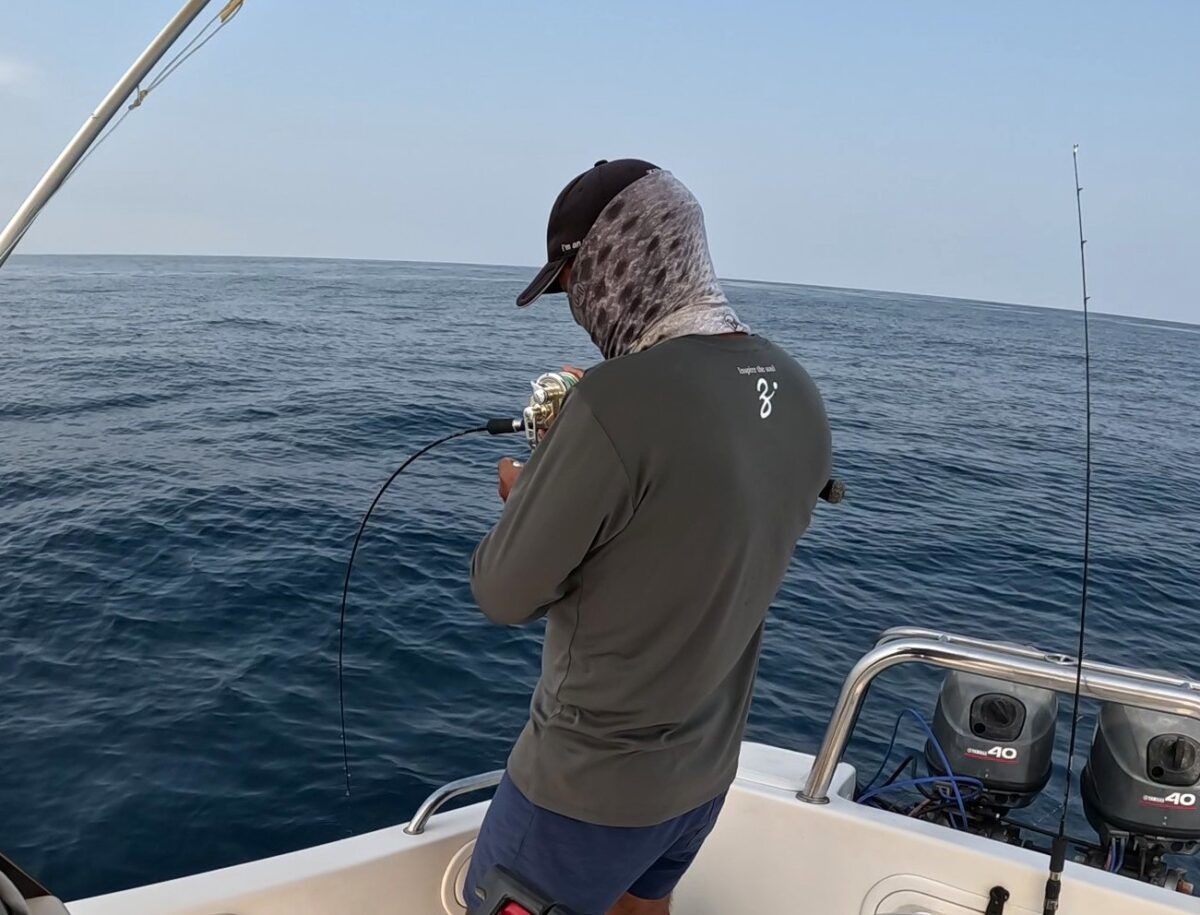
Handling a Big Preadator
After I took the Grouper of the bottom it became a little bit easier to bring her up, but still, something bad can happen and the focus needs to be 100%. The battle is only won when the fish reaches the last 10 meters and starts to float until then we won nothing. These old fish don’t react the same as juveniles and medium size, they did not get huge by not being smart. They learned how to use their strength and choose the right time to do so. This is the moment that I call…. “breaking the fish will.”
What I mean by this is, that every big fish doesn’t waste energy like small and medium size fish do. When they fight, they don’t get in panic trying to get the hooks off and running like crazy wasting energy in vain, so they make a test first. When they hit the jig, they use only their body weight and 50 to 60% of their strength in order to see if they can break or reach the bottom or get loose of whatever is holding them back. If they feel that using their half body energy trying to go down is working, only then, they will use all their power tail explosion and strength to continue to go down and look for any rock or sharp edge. So when I say breaking the fish will I mean. Her will and intend to reach for the bottom. How do I do it?
The moment she uses her 60% of strength trying to get down, we must do all we can do let no line coming out no matter what, this will let the fish know that going down is not working for her, so she needs to change is strategy like stop and shake her head or example, and this favors us, as long she is not going down and still losing energy.
On the other hand, if we let any line out, we are telling the fish that what she is doing is working for her, she just needs to use all his strength in order to succeed in reaching the bottom. This is why we need to break her will, and gain time to pull her until he realizes that the only option remaining now is to use all her energy once again to reach the bottom.
But by now, we have the fish a few meters of the bottom and have the upper hand. Even if she succeeds in touching the bottom, she will be tired and we can pull her back again with much less effort than the first time. Fighting strategy is so important when we face these huge fish, especially when you are using normal or light setups for regular fish and this happens.
The Fish Caught Was A Same Dogtooth Grouper!
So, after a few minutes of a hard battle, I managed to get this beautiful and huge Dogtooth Grouper to the surface and ready to put her on deck. All of a sudden when I’m pulling her in, I notice the jig I lost the day before in her mouth, so I was extremely happy for two reasons;
The first, to be able to track and find the same fish and not letting her with a jig in her mouth, and second, for being able to catch this massive 48kg Dogtooth Grouper with no mistakes this time… just perfect could not hope for a better outcome.
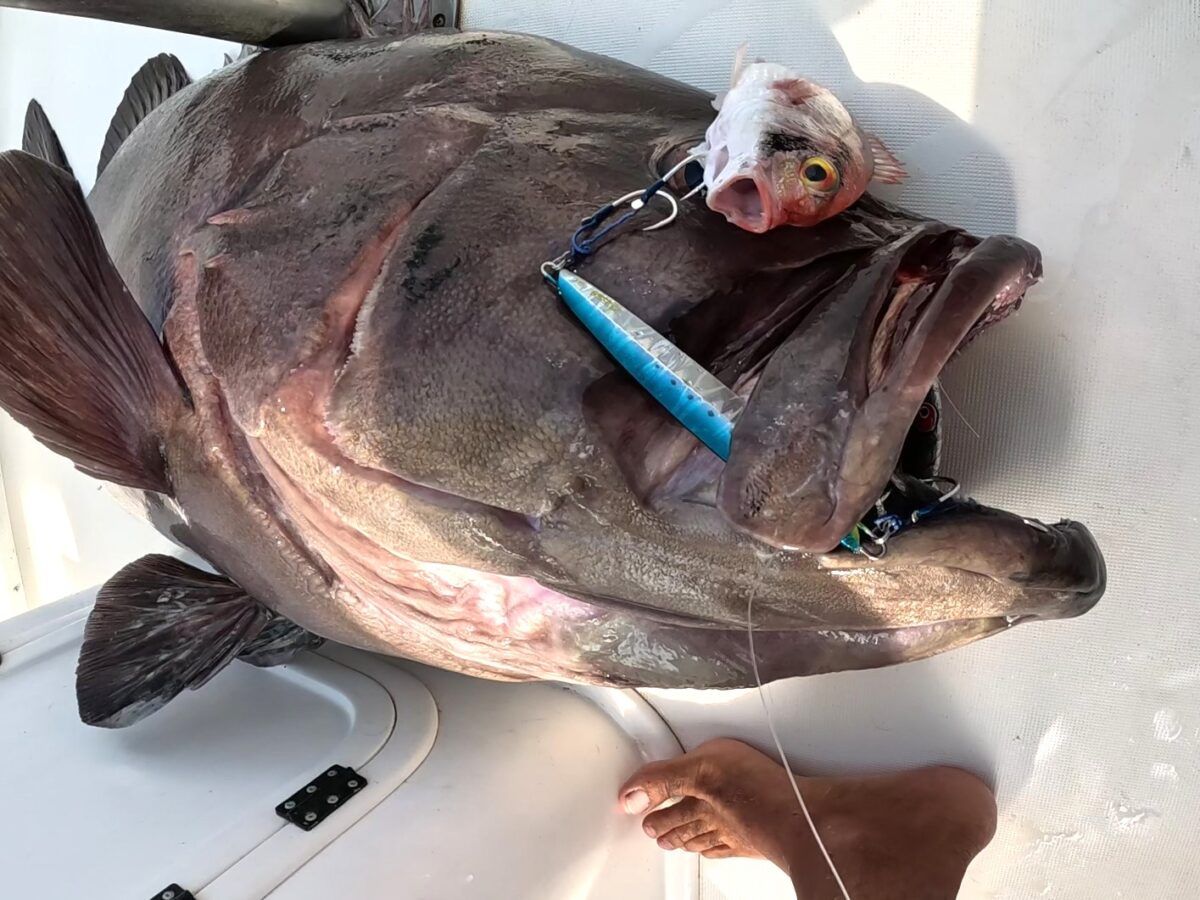
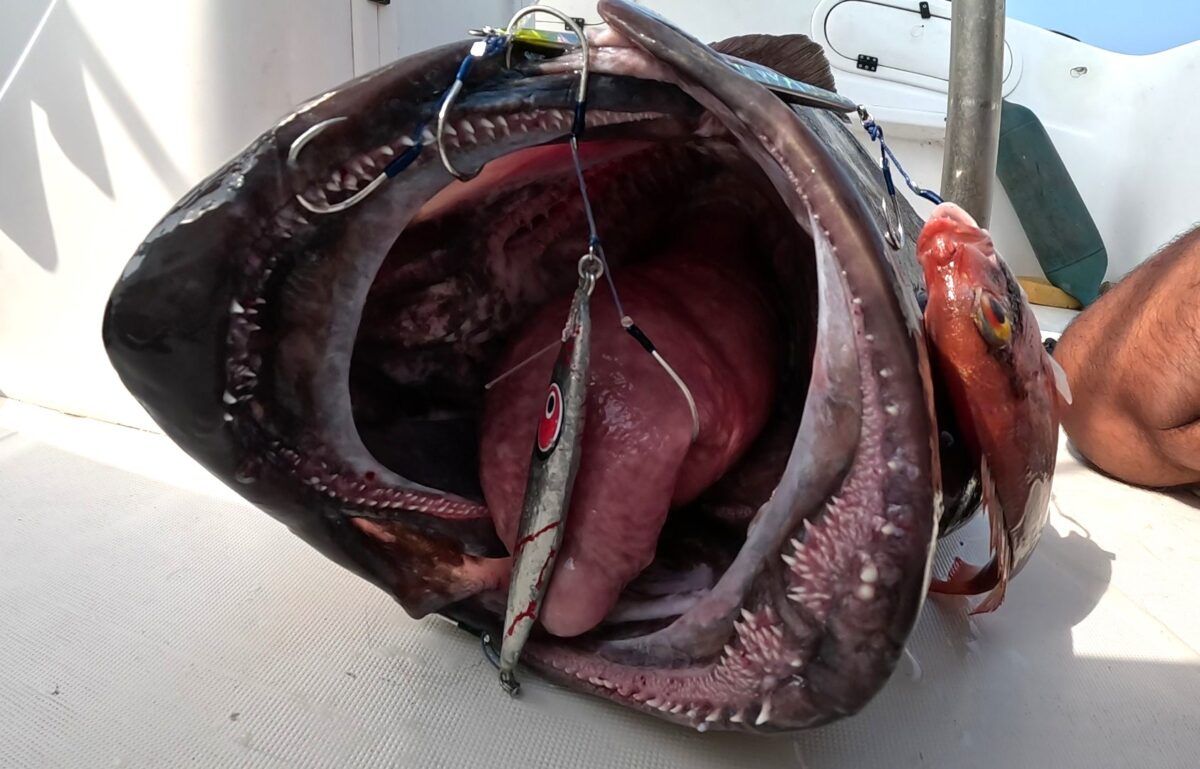 The jig inside her mouth was the one that I lost the day before…
The jig inside her mouth was the one that I lost the day before…
Happily this is the second time that I managed to track and find a Grouper in the same conditions and I feel happy and fortunate for that.
I hope you have enjoyed this story and until the next time!
Luis Ramos
